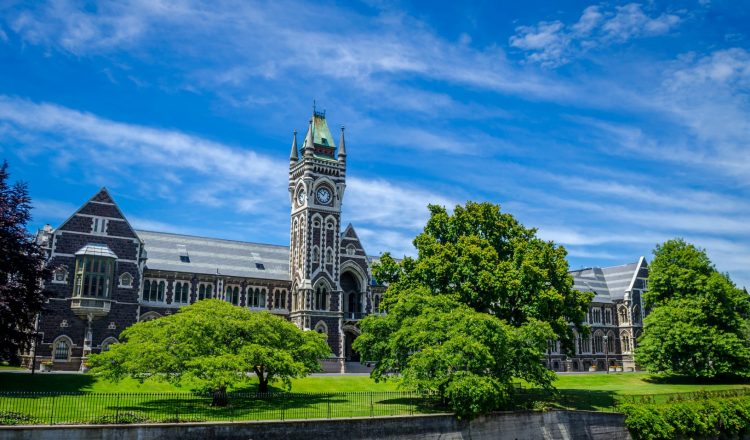Understanding NZ Qualification (NZQF)
Whether you’re studying at secondary or tertiary level, it’s a good idea to check that your study programme will lead towards a qualification on the New Zealand Qualification Framework (NZQF), because this means it’s quality assured.
Qualifications on the NZQF lay out a clear pathway to the level of knowledge and skills that you’ll have gained when you graduate, as well as what further education and employment opportunities the qualification could lead to.
Levels of the NZQF
The NZQF is divided into 10 levels, and covers a range of qualifications from certificates to doctoral degrees. The levels are based on how complex the learning is, with a level 1 certificate the least complex.
At secondary school, students work towards NCEA (National Certificate of Educational Achievement), which covers levels 1 to 3 of the NZQF.
After secondary school, students who want to continue their study at a tertiary level can choose from a number of education options ranging from universities to polytechnics, private training establishments, industry training organisations and more. Students may need to finish secondary school to study at this level.
1. Basic general and/or foundation knowledge
Skills
- Apply basic solutions to simple problems
- Apply basic skills required to carry out simple tasks
Application
- Highly structured contexts
- requiring some responsibility for own learning
- Interacting with others
2. Basic factual and/or operational knowledge of a field of work or study
Skills
- Apply known solutions to familiar problems
- Apply standard processes relevant to the field of work or study
Application
- General supervision
- Requiring some responsibility for own learning and performance Collaborating with others
3. Some operational and theoretical knowledge in a field of work or study
Skills
- Select and apply from a range of known solutions to familiar problems
- Apply a range of standard processes relevant to the field of work or study
Application
- Limited supervision
- Requiring major responsibility for own learning and performance
- Adapting own behaviour when interacting with others
- Contributing to group performance
4. Broad operational and theoretical knowledge in a field of work or study
Skills
- Select and apply solutions to familiar and sometimes unfamiliar problems
- Select and apply a range of standard and non-standard processes relevant to the field of work or study
Application
- Self-management of learning and performance under broad guidance
- Some responsibility for performance of others
5. Broad operational or technical and theoretical knowledge within a specific field of work or study
Skills
- Select and apply a range of solutions to familiar and sometimes unfamiliar problems
- Select and apply a range of standard and non-standard processes relevant to the field of work or study
Application
- Complete self-management of learning and performance within defined contexts
- Some responsibility for the management of learning and performance of others
6. Specialised technical or theoretical knowledge with depth in a field of work or study
Skills
- Analyse and generate solutions to familiar and unfamiliar problems
- Select and apply a range of standard and non-standard processes relevant to the field of work or study
Application
- Complete self-management of learning and performance within dynamic contexts
- Responsibility for leadership within dynamic contexts
7. Specialised technical or theoretical knowledge with depth in one or more fields of work or study
Skills
- Analyse, generate solutions to unfamiliar and sometimes complex problems
- Select, adapt and apply a range of processes relevant to the field of work or study
Application
- Advanced generic skills and/or specialist knowledge and skills in a professional context or field of study
8. Advanced technical and/or theoretical knowledge in a discipline or practice, involving a critical understanding of the underpinning key principles
Skills
- Analyse, generate solutions to complex and sometimes unpredictable problems
- Evaluate and apply a range of processes relevant to the field of work or study
Application
- Developing identification with a profession and/or discipline through application of advanced generic skills and/or specialist knowledge and skills
- Some responsibility for integrity of profession or discipline
9. Highly specialised knowledge, some of which is at the forefront of knowledge, and a critical awareness of issues in a field of study or practice
Skills
- Develop and apply new skills and techniques to existing or emerging problems
- Mastery of the field of study or practice to an advanced level Application
Application
- Independent application of highly specialised knowledge and skills within a discipline or professional practice
- Some responsibility for leadership within the profession or discipline
What you’ll get once you complete a qualification
Here are the components you’ll receive after completing a qualification on the NZQF:
1. A certificate of your achievement: Provided to you by your education organisation, this shows you’ve achieved a level of learning and understanding that’s outlined in the outcome statement for the qualification.
2. Addition of the qualification onto your Record of Achievement: If your qualification is listed on the NZQF, it will be added to your Record of Achievement. Your Record of Achievement has all the quality-assured (NZQF-listed) learning you’ve completed, and will be updated with each new qualification you complete.

















































